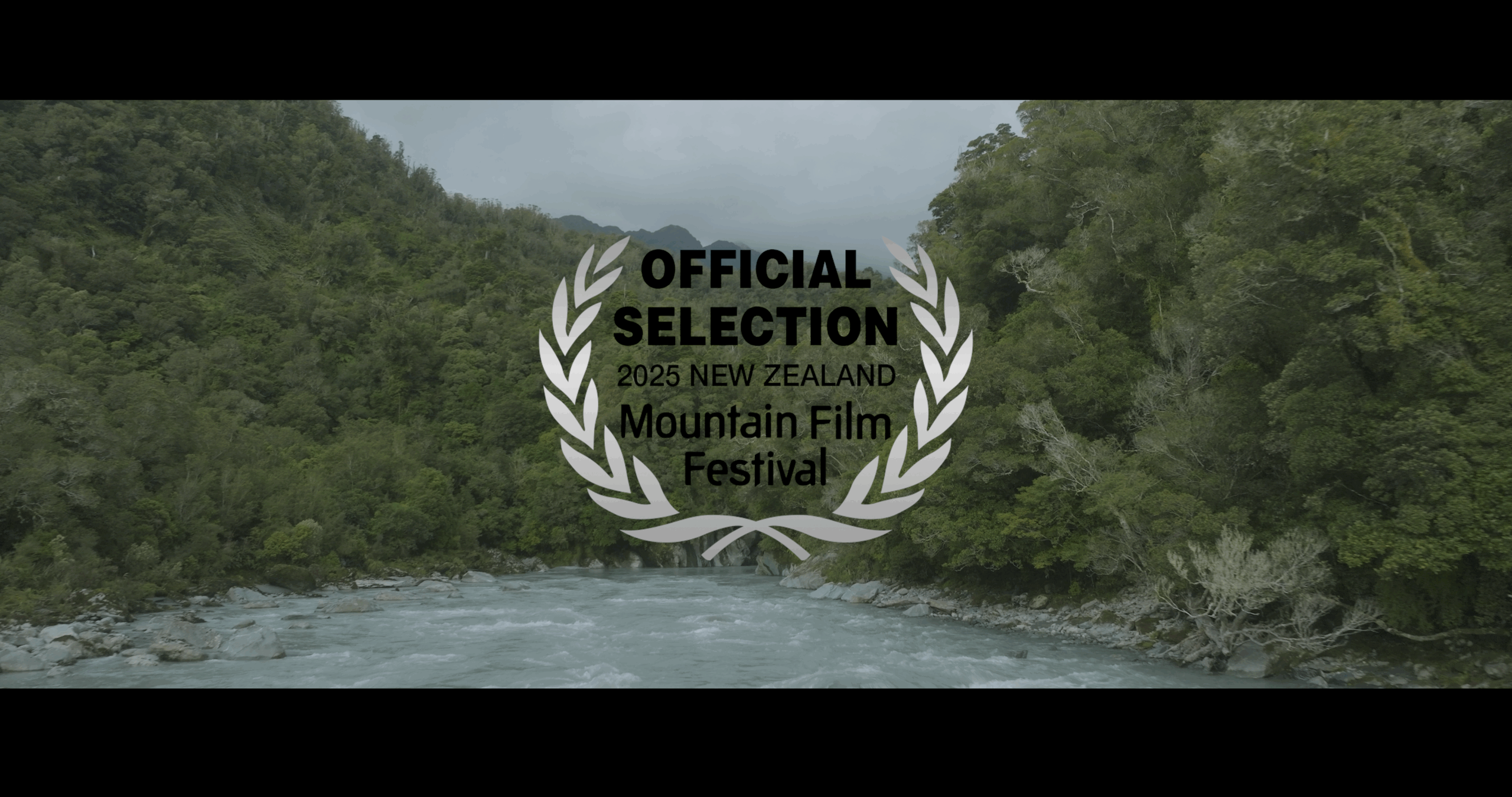High in the misty valleys and rugged ridgelines of the central West Coast, a quiet revolution has been unfolding — one nailed venetian-blind marker at a time.
What began as one man’s mission to save a few fading backcountry huts from demolition has grown into a powerful, nationwide movement — and now, it’s the subject of a new documentary set to premiere at the 2025 New Zealand Mountain Film & Book Festival in late June.

Hut Keepers, directed by filmmaker Liam Hall, tells the story of Hokitika local Andrew Buglass, the founder of the Permolat group, and the community of volunteers who have helped with the restoration of 50 remote huts on the West Coast, from Karamea to Haast. Some of these humble shelters, many dating back to the deer-culling era of the 1950s and 60, were once slated for removal due to lack of funding and low use.
Instead, thanks to a groundswell of backcountry passion and Kiwi ingenuity, they’re now being lovingly maintained and celebrated.
A Movement is Born
The seed for Permolat was planted back in 1972, when a teenage Buglass first stumbled into Grassy Flat Hut, soaked and exhausted after a tough trip up the Styx Valley. Welcomed by a couple of old-school cullers baking scones on an open fire, that moment of warmth and camaraderie left a lasting impression.
Fast-forward to 2004, when Buglass, now an experienced tramper and outdoorsman, learned that a Department of Conservation (DOC) review had earmarked several remote huts in central Westland for removal. Alarmed, he launched the Remote Huts website, showcasing obscure tracks and shelters to encourage more foot traffic — and more protection.
The name “Permolat” comes from the strips of old venetian blinds once used by the New Zealand Forest Service to mark backcountry routes. These humble markers became a symbol of the movement: a DIY approach to reclaiming New Zealand’s forgotten corners.
Cutting Tracks, Rebuilding History
Permolat volunteers — armed with hand tools, elbow grease and sheer grit — began reopening overgrown tracks and restoring huts from the ground up. What began with a single route-clearing mission in the Kokatahi soon expanded into a full-blown crusade. In 2006, the first “maintain-by-community” contract was signed with DOC for Scotty’s Biv in the Taipo valley and from here the Group went on to do a number of other projects in Westland’s remote hut zone.

By 2014, the Permolat Trust had been formed to manage donations, and the wider volunteer hut movement was surging across the country. The Backcountry Trust (BCT), formed in 2017, brought further momentum with coordinated funding and support for hut and track restoration, creating a lasting legacy of collaboration between DOC, community groups and outdoor enthusiasts.


A Story Worth Telling
Now, the work of Andrew and the wider Permolat community is reaching new audiences through Hut Keepers — a beautifully shot, deeply personal film that captures not just the sweat and toil of the mahi, but the deep sense of purpose behind it.
Filmed in some of New Zealand’s most remote wilderness areas, Hut Keepers is both a love letter to the backcountry and a call to action. It features spectacular alpine footage, interviews with Permolat members, and rare archival material from the Forest Service era. Among the featured locations are Top Olderog Biv and Dunns Hut where Buglass worked as a hammer hand helping BCT carpenters with their work.

Top Olderog
“These old tin shacks are part of our heritage and deeply embedded in our collective psyche,” says Buglass. “They’re the small stations on our wilderness journeys that we remember and share in our stories.”
The documentary has already generated buzz in the outdoor community, and its premiere at the Mountain Film Festival is expected to draw trampers, conservationists and lovers of wild places from around the country. Following the festival, Hut Keepers will be made available online via the film’s official website: www.hutkeepersfilm.com.

Dunns rebuild (2nd phase)

Dunns rebuild (2nd phase)
A Lasting Legacy
Now 68, Buglass says Permolat has served its purpose as a spark — igniting a broader, decentralised movement of hut care groups around Aotearoa. While a core crew of volunteers still work quietly under the Permolat name, the spirit of the group has spread far beyond the valleys of Westland.
“In 2025, it’s immensely satisfying to know that our remote, low-use hut and track networks are in better shape than they’ve been in decades,” he says. “All these great little huts in magic places that would have been removed or left to run down had it not been for the energy and dedication of the outdoor community, are there now for the next generation to use and enjoy.”
As Hut Keepers prepares to take centre stage at the film festival, it’s not just a celebration of huts and hard work — but of community, connection, and the enduring magic of wild places.
Watch ‘Hut Keepers’
- Premiere: June 2025, NZ Mountain Film & Book Festival, Wānaka and Queenstown
- More Info & Online Viewing: www.hutkeepersfilm.com | www.mountainfilm.nz
Both the projects filmed in the documentary were Backcountry Trust projects, where Buglass was on site as a hammer hand.









